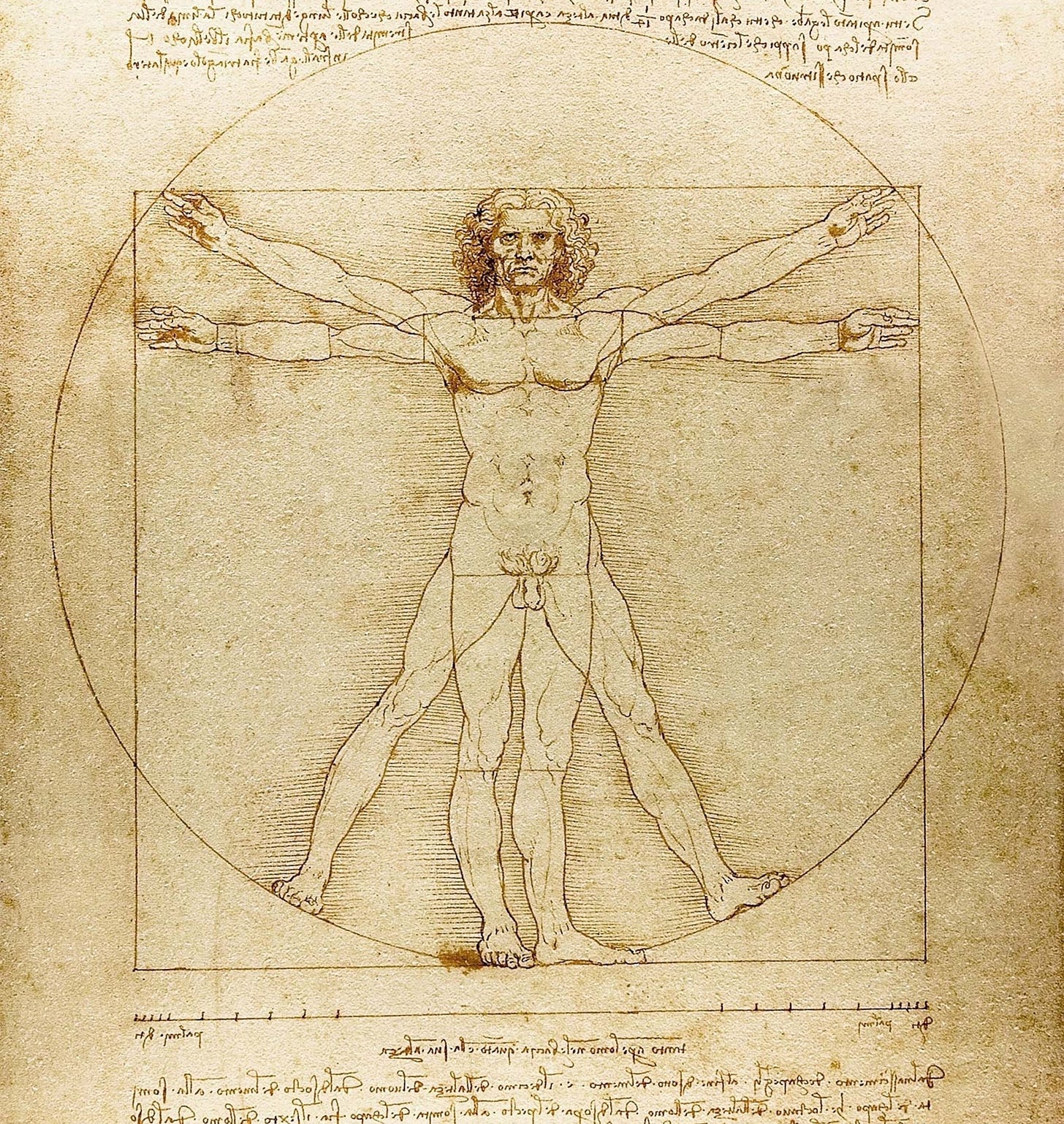The Vitruvian Man
Leonardo da Vinci’s iconic sketch of ideal human proportions remains an inspiration to this day
FEW IMAGES capture the spirit of the Renaissance as powerfully as The Vitruvian Man, Leonardo da Vinci’s iconic sketch of ideal human proportions.
Created around 1490, this pen-and-ink drawing shows a nude male figure in two superimposed positions, arms and legs extended, enclosed within a circle and a square. At first glance, it is an elegant study of symmetry. But beneath its aesthetic beauty lies a profound meditation on the unity of art, science, and the cosmos.
The drawing takes its name from Vitruvius, a Roman architect and engineer who lived in the 1st century BCE. In his treatise De Architectura (On Architecture), Vitruvius proposed that the human body, when ideally proportioned, reflects the natural harmony of the universe. He suggested that the body could be used as a model for designing buildings, particularly temples, because it fits perfectly into both a circle — symbol of the divine — and a square, which represents the earthly and the material.
##CROSSOVER: Click here to read our story, Pioneers of exploration and innovation, at www.newasiacurrents.com
Leonardo was captivated by this concept. A polymath deeply committed to understanding both the natural world and human form, he studied anatomy through direct observation and dissection. His Vitruvian Man is not just a visualisation of Vitruvian theory, but also a reflection of Leonardo’s own anatomical investigations. The notes that accompany the drawing detail precise measurements: for instance, the span of a man’s arms equals his height, the distance from the hairline to the chin is one-tenth of his height, and so forth.

The geometric framing of the figure carries symbolic weight. The square represents structure, logic, and the tangible world, while the circle signifies unity, eternity, and the divine. By embedding the human body within both shapes, Leonardo communicates a philosophical message: that humankind is a bridge between the earthly and the celestial — a microcosm of the universe.
More than a study of proportion, The Vitruvian Man embodies the Renaissance ideal of the homo universalis — the universal man who excels in multiple fields. Leonardo himself epitomised this concept. As a painter, engineer, scientist, inventor, and thinker, he seamlessly integrated disciplines that are today seen as separate. His drawing stands as a testament to the holistic approach of Renaissance thought, where art and science were intertwined in the pursuit of truth.
Today, The Vitruvian Man remains one of the most reproduced and recognisable images in the world. It is featured in everything from textbooks to medical journals, logos to documentaries, and continues to inspire those interested in the connections between the human body, mathematics, and the wider cosmos.
Ultimately, Leonardo’s masterpiece reminds us that the search for proportion and harmony is not merely an artistic exercise, but a philosophical quest. It speaks to a timeless desire to understand our place in the universe — as beings shaped by nature, yet capable of shaping it in return. - Sebastian Lim
** SALUTING THE LEGEND. Click here to read our editorial and links to the main stories of the NAC Focus on Zheng He. NAC Focus, with New Asia Currents and Postscript NAC, makes up the media platform of the Commonwealth of World Chinatowns
All articles, opinions, and events featured in PostScript NAC represent the views of the interviewees, individual writers and contributors, and do not necessarily reflect those of PostScript NAC. While we strive to ensure all information on this post is accurate, complete, and current, PostScript NAC is not responsible for any errors, omissions, or outdated content.



